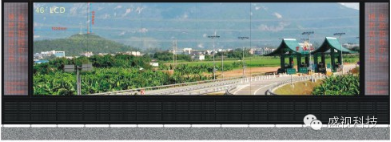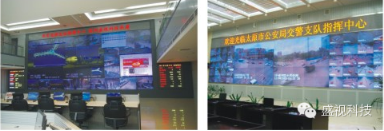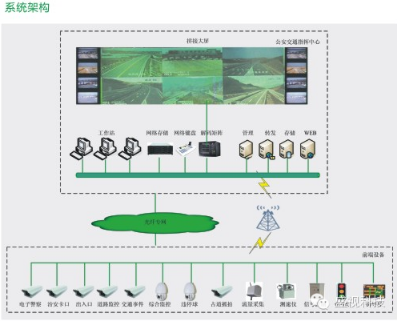
?
The large screen market in China has a history of more than ten years. Viewed from demands, the demands in China for information visualization are increasing dramatically as a result of stable development of the domestic economy and the huge informatization construction investments in different fields; viewed from products, the continuous decrease of costs and the continuous progress of technologies have laid a foundation for quick development of the large-screen splicing market. During the 12th Five-Year Plan period, driven by huge government investments, informatization and industrialization in fields such as traffic, electric power, coal, energy, communication and public security organs, procuratorial organs and people's courts, large-screen display systems will become the cores of information systems.
?
The main video wall technologies on the market include DLP (digital light processing) rear projection splicing, LCD splicing and PDP splicing. The biggest difference of these three technologies lies in their display principles or, for end users, physical seams. Usually, each physical seam in the DLP rear projection splicing is 0.5 mm at most, 1 mm to 3 mm in the PDP splicing technology or 5.3 mm at least. Viewed from product size, the DLP rear projection splicing technology is mature and has experience in products of 60″, 70″, 80″and 84″; the maximum product size in the other two technologies is 60″.

With the increasing stricter requirements of users in fields such as traffic, energy, governments, banks and public security organs, procuratorial organs and people's courts for display equipment, the products for different fields have different sizes, seams, definitions, brightness, contrasts, etc. With more and more applications of large-screen splicing systems, these differences are increasingly apparent. For example, fields such as smart cities and security protection have a stricter requirement for the real-time display of video monitoring signals, the linkage of GIC maps and the remote conferences subject to uniform allocation control; fields including electric power, rail transit and coal production monitoring have a stricter requirement for the seamless display of process management, production flow charts, etc.
A large-screen display system includes an image display subsystem, an image processing subsystem, a signal source switching subsystem, etc. A video wall realizes simultaneously processing for multiple signals with help of advanced and high-speed image processing technologies and forms a high-brightness, high-definition, low-power-consumption and long-life video wall display wall integrating the LCD technology with high definition, brightness and color range, the embedded hardware splicing technology, the multi-screen image processing technology, the signal switching technology, etc. With help of its hardware and software, the large-screen display control system independently developed by Maxvision is connectable with multiple signal sources and compatible with main hardware equipment.
?
?

?
In 2015, the large-screen splicing market will have great demand and explosive growth. The year will witness fierce competition of the market: LCDs will have increasingly larger sizes and increasingly less seams, taking more market share of conventional DLPs; the maintenance-free DLPs based on LED display will take the place of UHP bulbs gradually to overcome its disadvantage of after-sale service cost.?
We have undertaken command centers of diversified scales and types and using large-screen display systems as their key equipment. According to our experience of nearly two decades and prediction of the technical trends in the industry, we believe the large-screen splicing technologies and market will witness new breakthroughs with integration between large-screen display products and the security protection industry and discovery of new user demands.
?